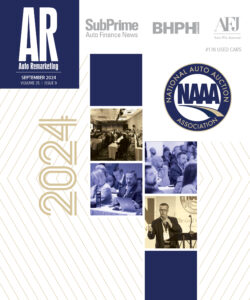Compliance More Important Than Ever to Repo Agents & Lenders

Recent economic pressures have changed the landscape for how loan defaults will be managed. Lenders and repossession agents now face an even greater threat of legal action from debtors.
In contrast to a year ago when repossession assignments were hitting record volumes, the recent economic upturn has had the opposite effect with repossession volumes dropping leaving some agencies scrambling. Challenged to stay afloat financially, adjusters are becoming more aggressive in their efforts to locate and recover assets.
Add debtors who are experiencing even greater financial pressure who are better educated and are inundated by lawyers who are more than willing to help, and you have a recipe for a lawsuit.
It is more important now than at any other time in the history of this industry to make sure you and your suppliers are in compliance. Recent class action lawsuits related to statutory defaults forms, in addition to increases in cases related to wrongful repossession and property damage highlight this fact.
We have seen that most lenders do not have well defined processes in place to protect them from these threats. Often supplier certifications are limited to faxed insurance documents requested during the on-boarding process with no or a limited continuous review process in place. Even less common are site audits of agent’s facilities which can be used to assess security, equipment, personal property inventory management, or even resources and licensing.
Over the years, our investigations have uncovered many abuses such as agents using lenders’ repossessed vehicles as chase vehicles to locate other repo assignments, damage claimed as existing damage that resulted from misuse, vehicles staged at various public parking locations to be picked up by a carrier later forgotten and impounded by the police, poor security and facilities resulting in theft and damage, even livestock walking around vehicles in impound.
Without a complete picture, it is impossible to certify suppliers or understand their capabilities and capacities. Even good performing agents that comply can be overloaded with assignments resulting in decreased performance, ultimately turning a good agent into a poor agent.
Lenders are also exposed to risks that results from non-compliance related to statutory default forms and notice letters. Typically these documents are time sensitive and require precise wording to comply with state laws. Templates are readily available from third-party legal sources, or they may be derived from in house counsel.
The challenge is keeping templates current with changing laws so that the language used and proof of delivery remain in compliance over time.
Unfortunately, it is still a manual paper-based process and is subject to human error, leaving lenders exposed. Even when documents are properly executed, remaining in compliance for proof of delivery can be challenging. Time sensitive, many states are very restrictive in when and how debtors are notified of intent to repossess and/or notice of sale.
By the time a document is created, printed and then posted, it may actually be out of compliance when it reaches the subject. Accurate proof of delivery must show that a lender complied not only in the wording and intent of the document but in its delivery.
So how can a lender reduce their risk and assure they and their suppliers are in compliance?
As a result of servicing more than 100 unique lenders portfolios, CARS has had to develop and deploy several processes required to effectively support the needs of both prime and subprime lenders repossessions and assure compliance.
—Ongoing review process performed with repossession agents, in addition to proof of insurance and licensing (where required). This step should include a site audit performed annually to cover an inventory of all equipment, facilities and resources to understand a supplier’s capacity, security and to what degree they conform to governing law.
—Integrating statutory default and other key documents into our IBEAM (Internet-based electronic asset management) Web portal used for repossession and remarketing management. Rather than manually populate these templates, our data warehouse can populate certain fields for the client, a paperless process, the user simply reviews the document online, adjusts if needed then selects the submit button.
—Create a process for addressing damage claims due to recovery efforts that can help to mitigate risks. By comparing vehicle condition at various check points in the process, and by photographing and documenting asset condition and mileage multiple times, a historical record is created.
Lenders should evaluate their certification and compliance processes regularly and have a continuous process improvement plan in place. Through training, well-defined processes and a technology for paperless management you will know when and how you are in compliance and able to track agent metrics and behavior to mitigate risks.
Terry Groves is the senior vice president of sales and marketing for Consolidated Asset Recovery Systems.

 View The Latest Edition
View The Latest Edition

